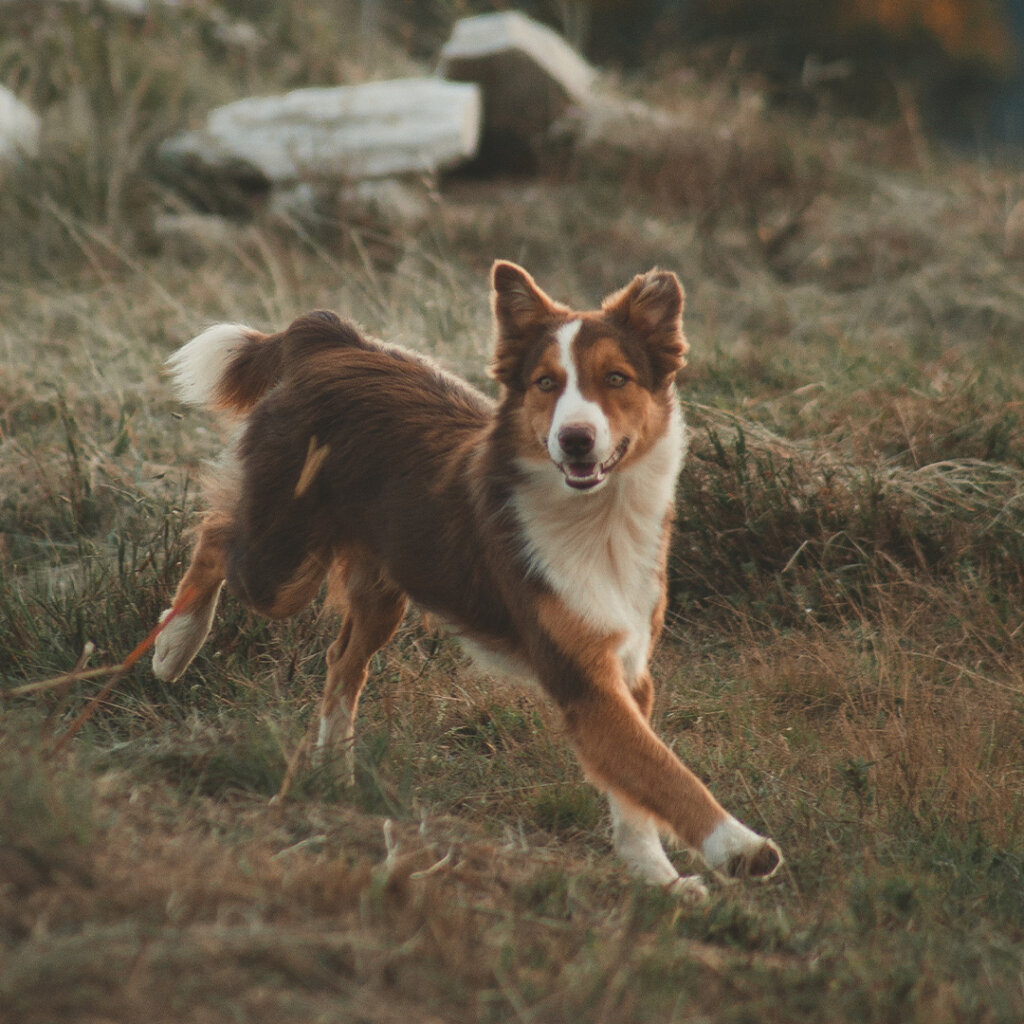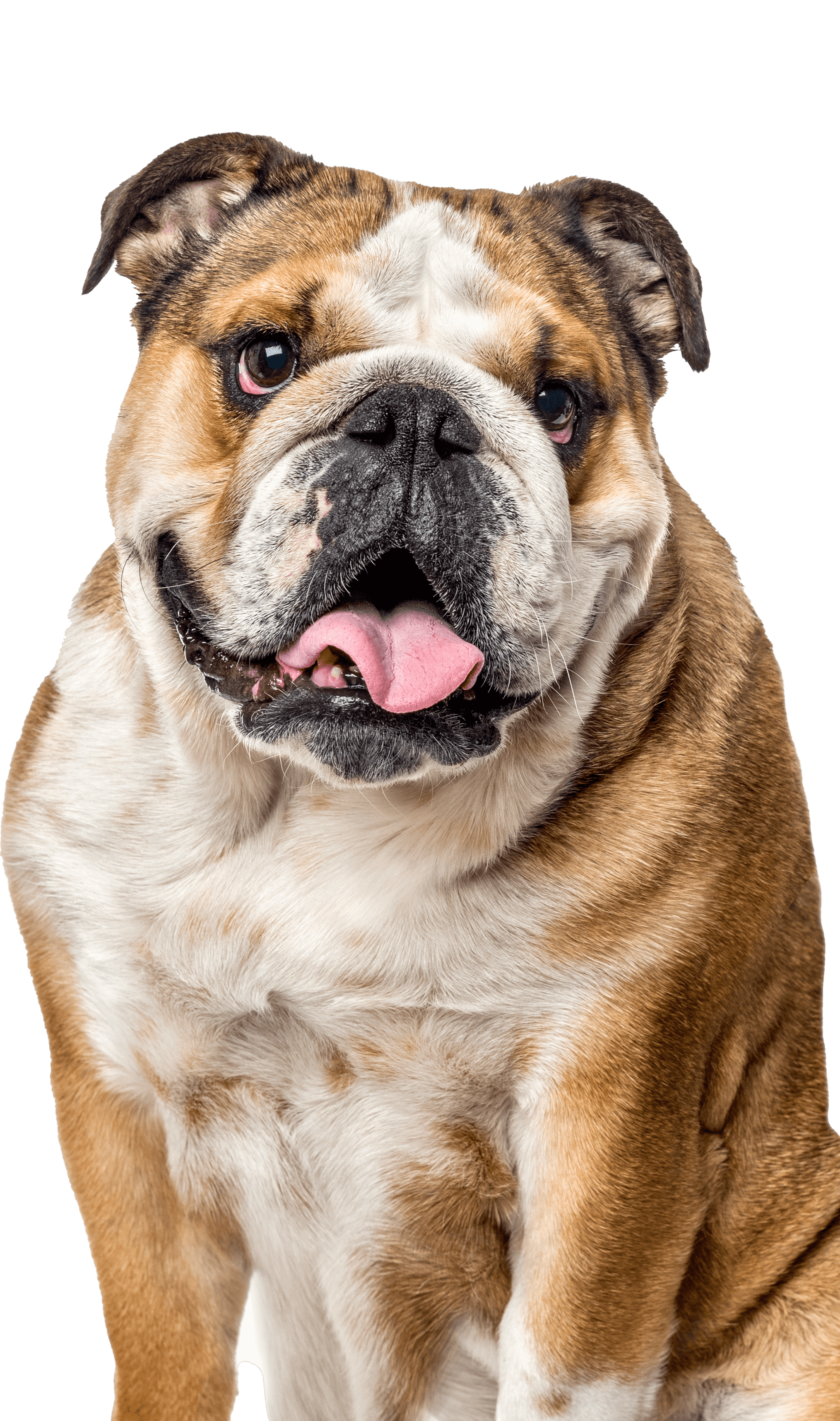Like a human, a dog’s exterior is a reflection of their interior health. Soft, shiny coats and clear skin generally indicate good health; whereas dull, brittle coats and oily or dry, itchy skin could indicate a health concern. So, how do we keep their skin and coat looking and feeling healthy? It requires supporting them both on the inside and the outside.
On the Inside
Nutrition
It’s common knowledge that good nutrition is linked to shiny coats and healthy skin. But what exactly in dogs’ food contributes to their skin and coat?
The two main nutrients that support skin and coat health are protein and omega-3 fatty acids, plus important vitamins and minerals like biotin and zinc. Your dog’s hair is mostly made of protein, and up to 35% of their daily protein intake is used to maintain their skin and coat.* Protein also plays a large role in their body’s overall functioning and cell regeneration. So, be sure that your dog’s food contains high levels of protein from high-quality sources, like real chicken or fish.
Omega-3 fatty acids, EPA and DHA, are critical to keeping coats shiny and skin healthy, plus their other important roles in brain, vision, hip and joint, and immune system health. Omega-3 and omega-6 fatty acids work together to balance inflammation in the body. Omega-6s elevate inflammation, and omega-3s lower it. Unfortunately, many commercial dog foods contain considerably more omega-6 fatty acids than omega-3s. If you find that your current food is lacking in omega-3s but you don’t want to switch your dog’s main diet, you can add an omega-3 supplement, like Dogswell Wild Alaskan Salmon Oil. Cold-water fatty fish like wild-caught salmon is one of the richest sources of omega-3 fatty acids. There are also many tasty dog treats that provide skin and coat benefits.
If you are interested in changing their diet to a skin and coat care dog food formula, be sure that the first ingredient is a high-quality fish, and it has multiple omega-3 sources like salmon oil and flaxseed oil.
On the Outside
Inspecting
One of the most important components of skin and coat care is also the simplest: check your dog’s skin and coat every day. While your dog is relaxed and happy, thoroughly pet them all over, inspecting their skin and looking for any bumps, bugs, dandruff, leaves, twigs, etc. caught in their fur. If you notice anything concerning, like a new lump or highly inflamed area, it’s best to call your veterinarian.
Brushing
All dogs need to be brushed routinely, with the exception of hairless breeds. Regular brushing has many benefits for both their skin and coat. For skin, brushing improves circulation and stimulates cell turnover by removing dead skin cells. For their coats, it distributes natural skin oils and encourages hair growth by removing loose hair. Brushing helps to cut down on shedding, but it’s also beneficial for non-shedding dogs to help prevent mats. The exact frequency of brushing and type of brush needed will depend on your dog’s breed and coat.
Dogs with long hair should be brushed at least twice a week to detangle their coats, and dogs with short hair can go longer in between brushing.
Grooming
Having your dog professionally groomed is a worthwhile expense. It’s generally recommended to take your dog to a professional groomer every 4-8 weeks, with some breeds requiring more frequent visits. It’s particularly important for dogs like poodles and poodle mixes to be groomed often, about every 4-6 weeks, because their hair grows quickly and doesn’t shed. Professional groomers have all of the knowledge, tools, and patience necessary for full grooming, including bathing, brushing, hair cutting, and nail trimming.
Bathing
“How often should I bathe my dog?” is a common question from new dog parents. The answer is basically when your dog is dirty or smelly. So, it really depends on their lifestyle. If they’re outdoors traipsing through muck and mud, they’ll need to get cleaned up more often than less active dogs. Just be sure not to bathe them too often because it can dry out their skin. Once every month or two is generally fine, and possibly less frequently in the dry winter months. Choose a fragrance-free, hypoallergenic moisturizing shampoo that’s formulated for dogs. Never use human shampoo on a dog! Dogs’ skin is 2-3 times thinner than humans’ and has a different pH level, so any human shampoo will be too harsh for their skin.
Pest Prevention
Tiny bugs like fleas and ticks can cause big problems for dogs, even beyond their skin. Fleas cause severe itching, scratching, and biting, leading to sores and hair loss. Ticks can cause swelling, pain, vomiting, fever, and lethargy, and even more serious issues like Lyme disease. To help prevent these pests, give your dog flea and tick prevention medication, which is available both topically and orally, and be sure to check your dog’s skin for ticks after extended times outdoors, especially in wooded areas.
Treatment & First Aid
Of course, skin issues happen, even with the most attentive care plan. Some of the most common signs of a skin problem include itching, biting, flaky skin, sores, redness, swelling, and hair loss. Skin issues can be caused by many things, like allergies, infections, pests, and even stress. If you notice your dog struggling with any of these symptoms, make an appointment to see your veterinarian. In the meantime, you can make your dog more comfortable with soothing topical products, like Dogswell® Remedy & Recovery® Hydrocortisone Lotion and Medicated Hot Spot Spray. Dogs get cuts and scrapes too, especially if they’re active outdoors, so it’s a good idea to keep first aid products on hand, like Wound & Infection Medication, Antiseptic Spray, and Liquid Bandage.
Supporting your dog’s skin and coat health is typically simpler than you’d think. The key is to find the right food and start early with grooming habits to acclimate them and establish a routine. With petting, brushing, and exciting dog treats, many dogs find that they enjoy keeping their skin and coat healthy!
*Hunter, Tammy, DVM; Ward, Ernest, DVM. The Importance of Your Pet’s Skin and Coat and the Role of Diet. https://vcahospitals.com/know-your-pet/the-importance-of-your-pets-skin-and-coat-and-the-role-of-diet.

